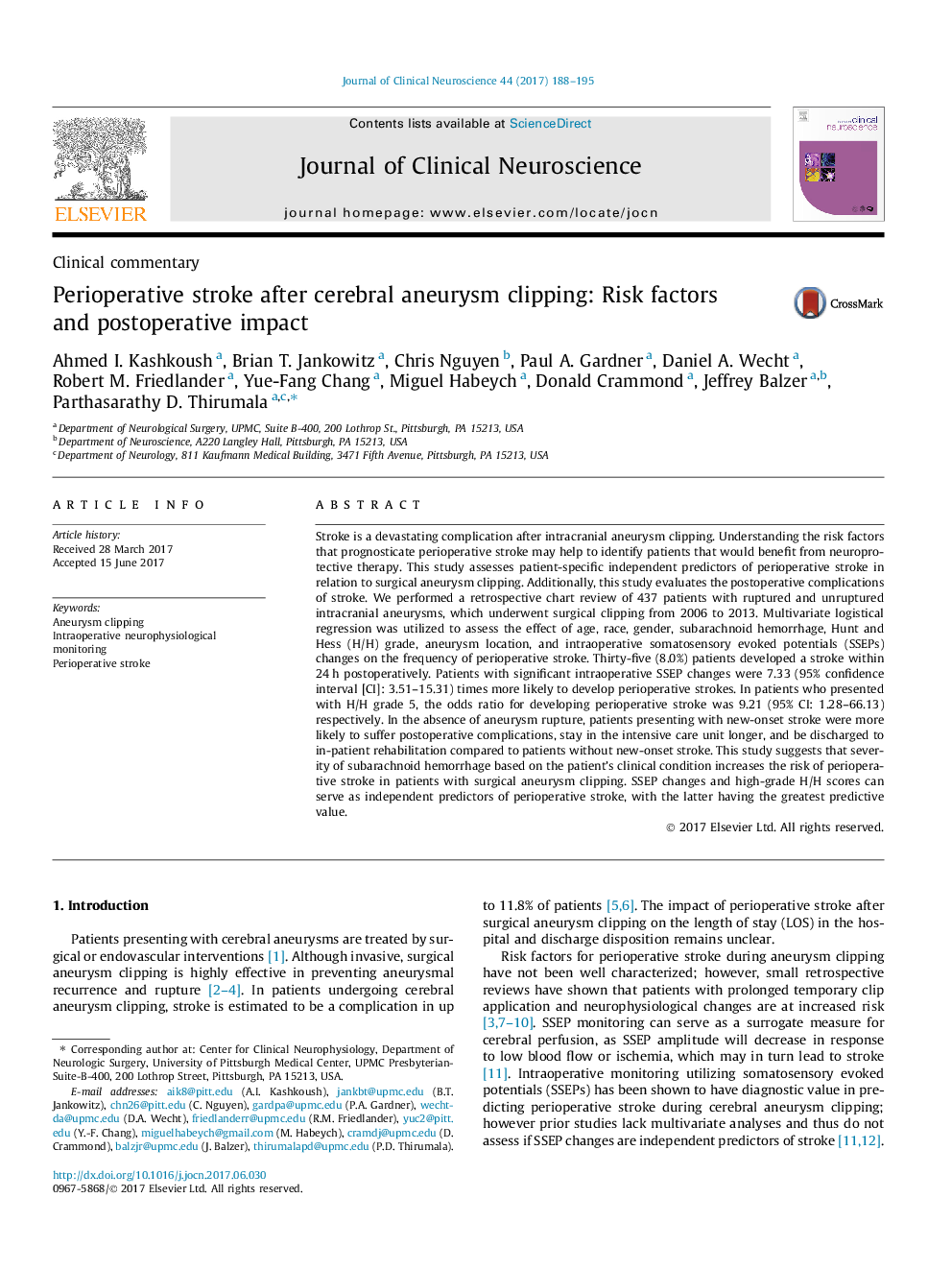| کد مقاله | کد نشریه | سال انتشار | مقاله انگلیسی | نسخه تمام متن |
|---|---|---|---|---|
| 5629529 | 1580272 | 2017 | 8 صفحه PDF | دانلود رایگان |
- SSEP changes and high-grade aneurysm rupture predict perioperative stroke.
- Aneurysm rupture alone is not predictive of the perioperative stroke rate.
- Perioperative stroke increases length of stay in unruptured cases.
Stroke is a devastating complication after intracranial aneurysm clipping. Understanding the risk factors that prognosticate perioperative stroke may help to identify patients that would benefit from neuroprotective therapy. This study assesses patient-specific independent predictors of perioperative stroke in relation to surgical aneurysm clipping. Additionally, this study evaluates the postoperative complications of stroke. We performed a retrospective chart review of 437 patients with ruptured and unruptured intracranial aneurysms, which underwent surgical clipping from 2006 to 2013. Multivariate logistical regression was utilized to assess the effect of age, race, gender, subarachnoid hemorrhage, Hunt and Hess (H/H) grade, aneurysm location, and intraoperative somatosensory evoked potentials (SSEPs) changes on the frequency of perioperative stroke. Thirty-five (8.0%) patients developed a stroke within 24Â h postoperatively. Patients with significant intraoperative SSEP changes were 7.33 (95% confidence interval [CI]: 3.51-15.31) times more likely to develop perioperative strokes. In patients who presented with H/H grade 5, the odds ratio for developing perioperative stroke was 9.21 (95% CI: 1.28-66.13) respectively. In the absence of aneurysm rupture, patients presenting with new-onset stroke were more likely to suffer postoperative complications, stay in the intensive care unit longer, and be discharged to in-patient rehabilitation compared to patients without new-onset stroke. This study suggests that severity of subarachnoid hemorrhage based on the patient's clinical condition increases the risk of perioperative stroke in patients with surgical aneurysm clipping. SSEP changes and high-grade H/H scores can serve as independent predictors of perioperative stroke, with the latter having the greatest predictive value.
Journal: Journal of Clinical Neuroscience - Volume 44, October 2017, Pages 188-195
